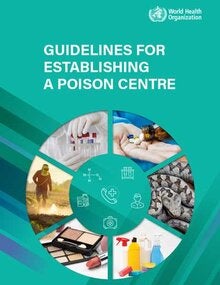Overview
This publication is an update of the Guidelines for poison control, published by WHO in 1997 under the auspices of the International Programme on Chemical Safety.
Poisoning is a significant global public health problem. WHO estimates that, in 2016, unintentional poisoning caused 106 683 deaths and the loss of 6.3 million years of healthy life (disability-adjusted life years) It has also been estimated that 81 410–137 880 people die each year from snakebites About 20% of global suicides are due to pesticide self-poisoning, mostly in rural agricultural areas in low- and middle-income countries and in many countries, poisoning is one of the main causes of emergency attendance at hospitals. Poisoning is a time-dependent emergency and, like infectious diseases, may require a specialist for appropriate diagnosis and treatment.
Poison centres are established in many countries as sources of specialized expertise to address the fact that health professionals could not be expected to know about the toxicity of every chemical substance and product and also to provide a focus for toxicological research. Poisons Centres have an important role in implementation of the International Health Regulations (2005) which require that countries have the capacity for surveillance, detection and response to public health events caused by chemicals. Much of this capacity can be provided by a well-resourced poisons centre.
The first section describes the history of poison centres and the policy background. It then provides an overview of the services that may be offered by a poison centre and the considerations to be taken into account in planning a poison centre. Subsequent sections address the more practical aspects of poison centre services and operations.
|

